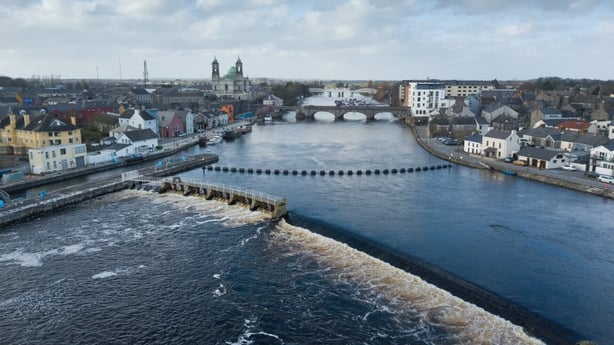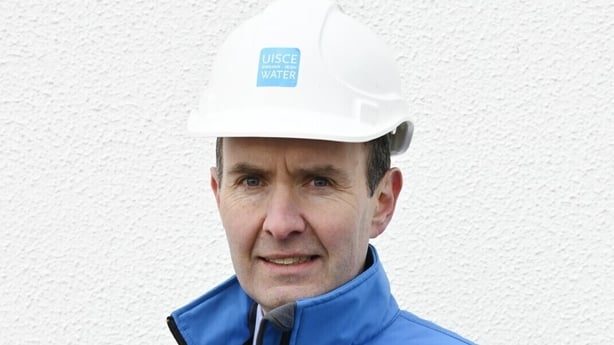Tunnelling works have gotten under way in Athlone this week as part of a three-year project to address a decades long problem of sewage overflowing into the town and the River Shannon during heavy rains.
Construction of the €114 million main drainage plant for Athlone began in January and work is progressing now on installing three kilometres of new pipework underground and underwater.
"It's a once in a generation project really for a town like Athlone and it's one of our biggest investments to date," explains Eunan Canavan, Portfolio Manager with Infrastructure Delivery Lead at Uisce Éireann.
This scheme involves the decommissioning of occasional sewer overflows at six locations and the construction of two new storm water drains, along with two tunnels, under the Shannon.
Two new pumping stations at Golden Island and Coosan West are also being developed. Uisce Éireann say the plans will bring huge benefits to the town.
"The capacity that we will generate in the network will allow the town to grow and prosper into the future," said Mr Cavavan.

"It will allow additional housing and industry to be developed so the town and indeed wider area can thrive," he said.
"In terms of the environment the water quality of the River Shannon will be improved by limiting discharges from the network as happens at the moment," he added.
Tunnelling works have gotten under way in Athlone this week as part of a three-year project to address a decades long problem of sewage overflowing into the town and the River Shannon during heavy rains | Read more: https://t.co/y7nhmEzAmW pic.twitter.com/MdWcUrTLGf
— RTÉ News (@rtenews) September 2, 2023
Athlone was one of the locations cited in a 2019 European Court of Justice judgment against Ireland for failure to comply with the Urban Wastewater Treatment Directive, regarding the discharge of untreated stormwater into sensitive areas.
The Shannon is a designated Nutrient Sensitive Area.
The project aims to reduce flooding, protect the environment and provide the capacity needed for more homes and development in the region.
It will also ensure that wastewater treatment meets environmental standards set by the EU while significantly reducing the risk of sewer flooding to homes and businesses.
"At the moment, the network that's in place just isn't able to deal with the flows. It's a combined network," said Mr Canavan.

"So what that means is, it's not just the wastewater from toilets, essentially, they're getting into the pipelines"
"It's also the rain so when the rain falls on roofs and roads and footpaths, it makes its way in the same sort of way into the gullies and obviously in durations of heavy rainfall than average just isn't able to cater for those flows"
"Essentially the pipes are too small there at the moment to deal with the flows that come into them and that's what we're targeting and that's why we're putting in three kilometers of new large diameter pipes that they'll be able to deal with those flows and it will address the findings of that European Court of Justice ruling.
The tunnelling method is being used for the installation of some of the new pipelines in the town, rather than using open cut-cut trenches.
Uisce Éireann has said this significantly reduces disruption in the town. Work got under way this week on that part of the project.
"It's a massive scale project. It's a huge network upgrade but the actual footprint on the ground is quite small so using the tunnelling method we're able to open ground in isolated areas, sink the machine and tunnel forward," said Sean Greaney, Project Manager.

"Most of the town of Athlone won't even know we're there. We'll arrive at the far end, remove the machine and the network will have been upgraded with little or no effect on the town itself," he added.
"So we're going well so far, we're hoping to turn the machine around in the next month, head back across the Shannon towards Golden Island, where we're set up at the moment."
Uisce Éireann said it plans to have the works completed by 2025.
"Once this upgrade is in place, it will allow for further housing developments and industry to be to be added into the network and new connections to come in to the to the system," Mr Canavan said.
"We hope to have the all works completed in 2025 and that's when you'll see the real benefits from the from the investment" he added.







